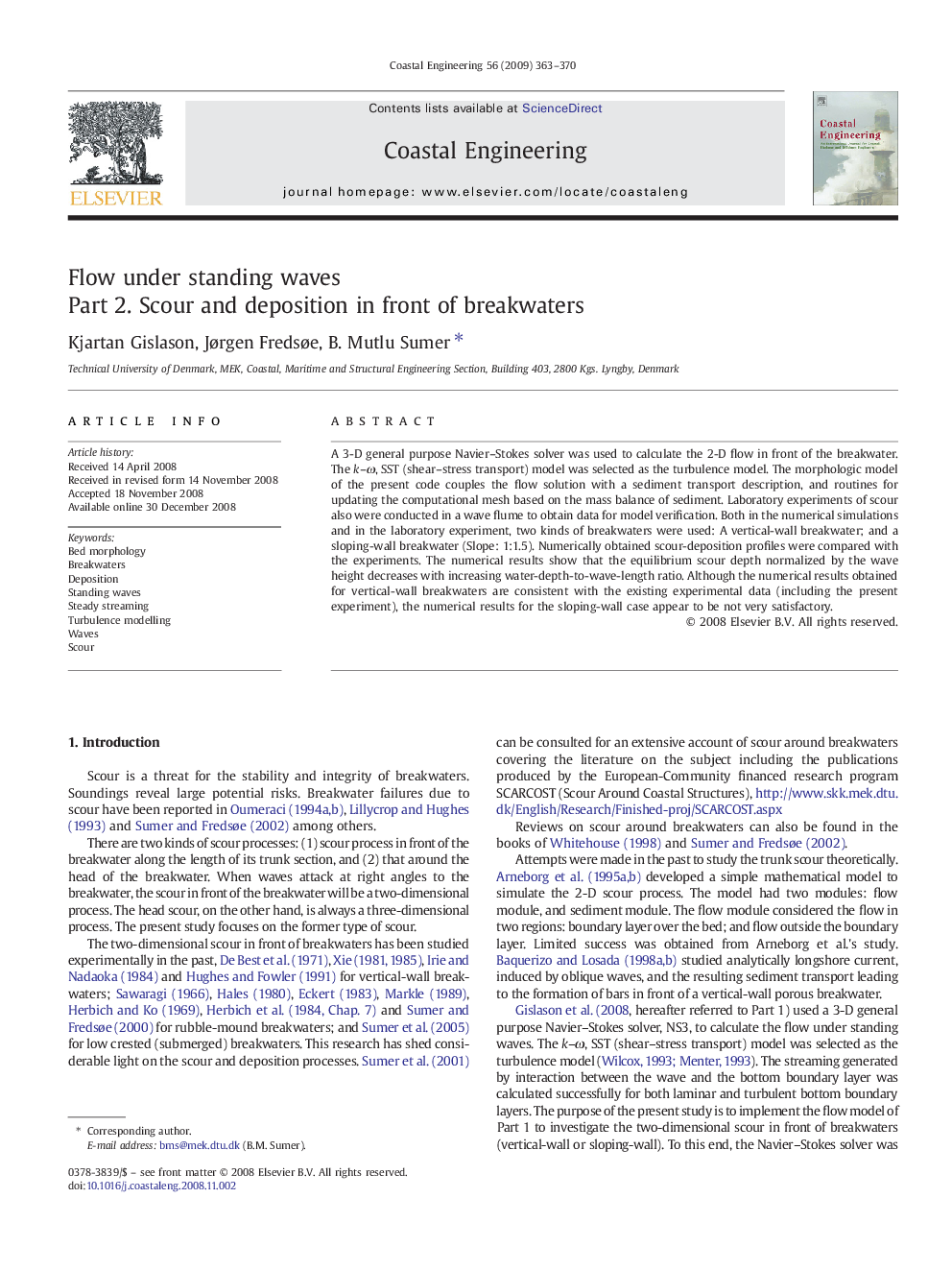| Article ID | Journal | Published Year | Pages | File Type |
|---|---|---|---|---|
| 1721439 | Coastal Engineering | 2009 | 8 Pages |
A 3-D general purpose Navier–Stokes solver was used to calculate the 2-D flow in front of the breakwater. The k–ω, SST (shear–stress transport) model was selected as the turbulence model. The morphologic model of the present code couples the flow solution with a sediment transport description, and routines for updating the computational mesh based on the mass balance of sediment. Laboratory experiments of scour also were conducted in a wave flume to obtain data for model verification. Both in the numerical simulations and in the laboratory experiment, two kinds of breakwaters were used: A vertical-wall breakwater; and a sloping-wall breakwater (Slope: 1:1.5). Numerically obtained scour-deposition profiles were compared with the experiments. The numerical results show that the equilibrium scour depth normalized by the wave height decreases with increasing water-depth-to-wave-length ratio. Although the numerical results obtained for vertical-wall breakwaters are consistent with the existing experimental data (including the present experiment), the numerical results for the sloping-wall case appear to be not very satisfactory.
